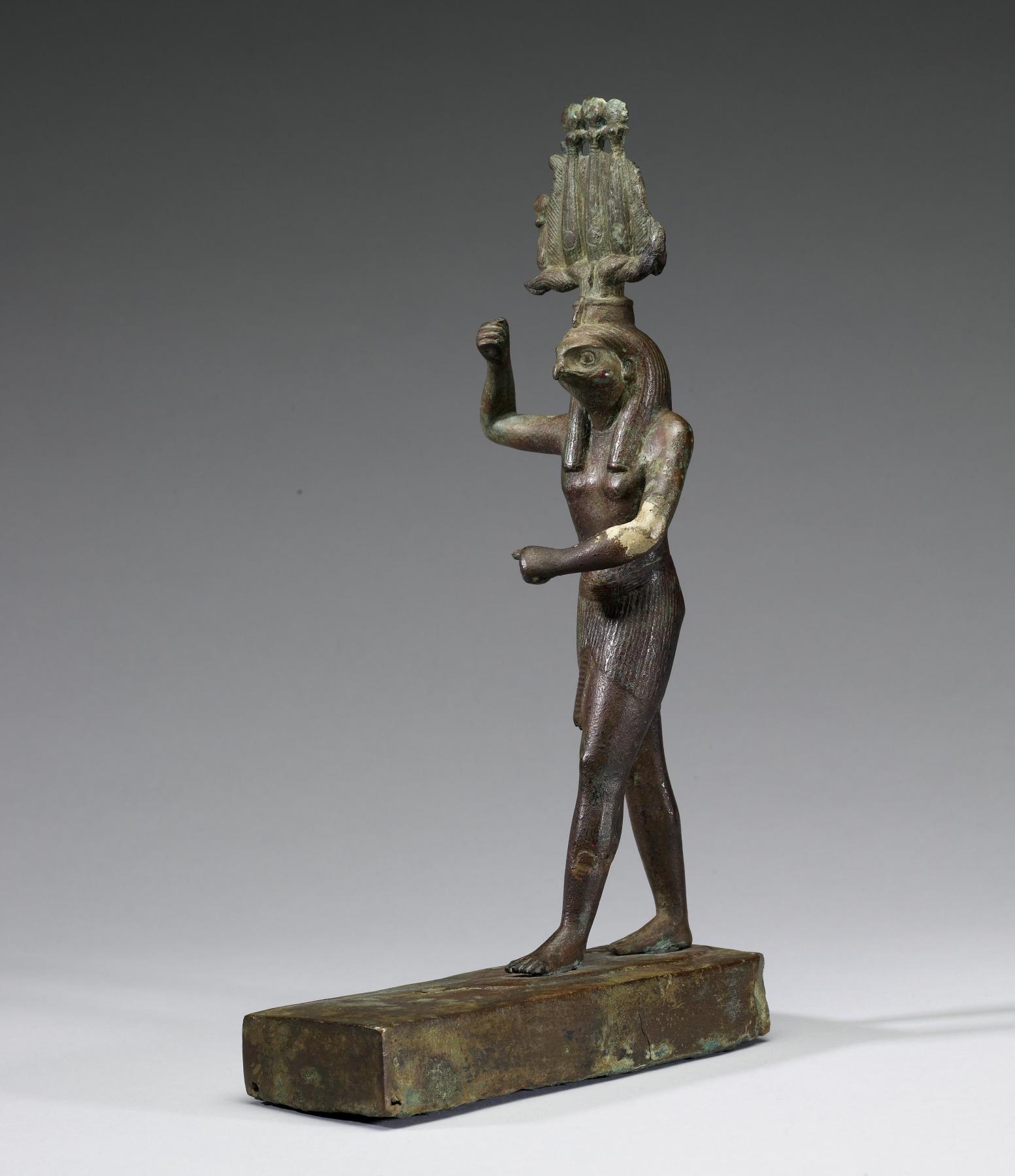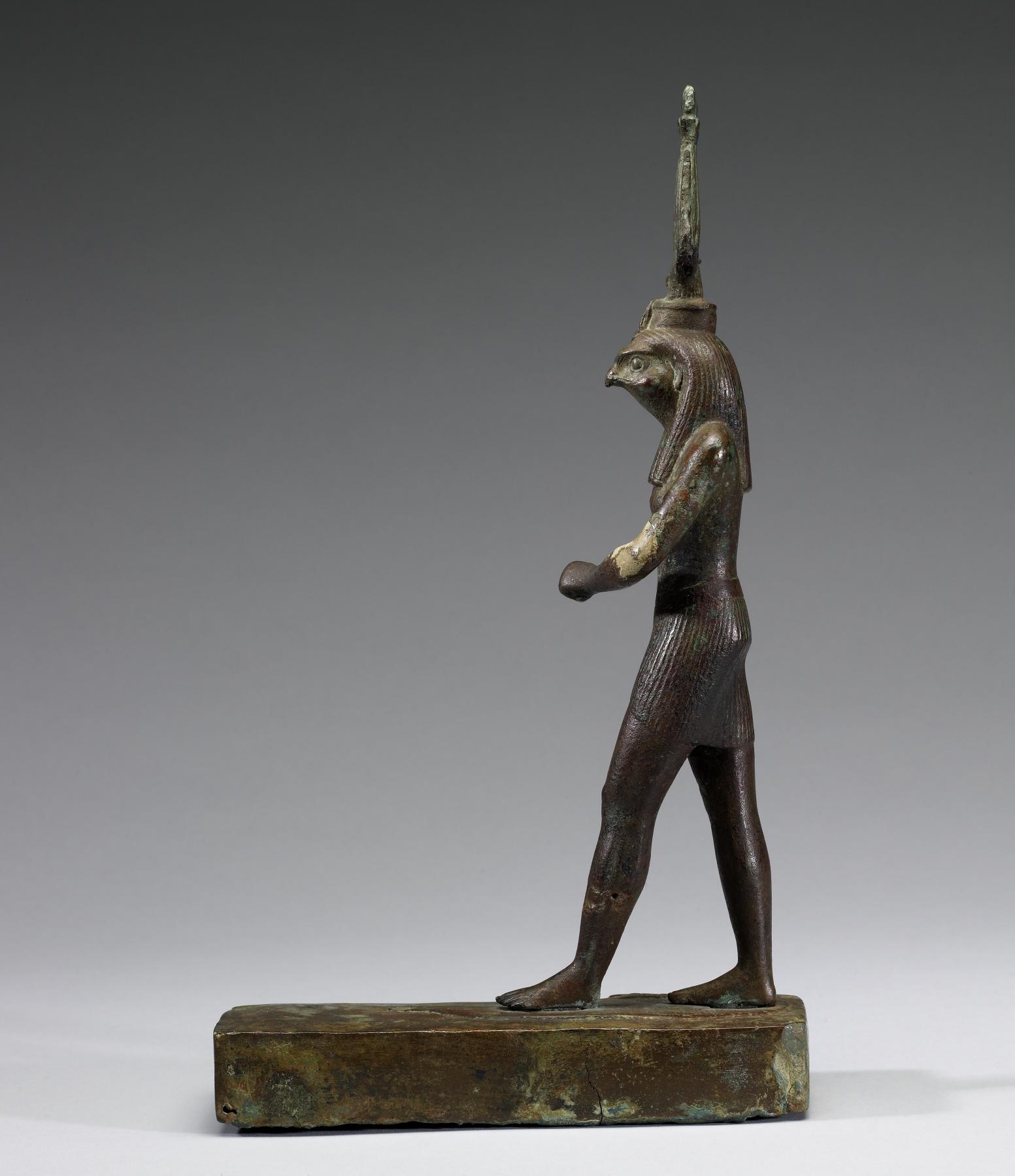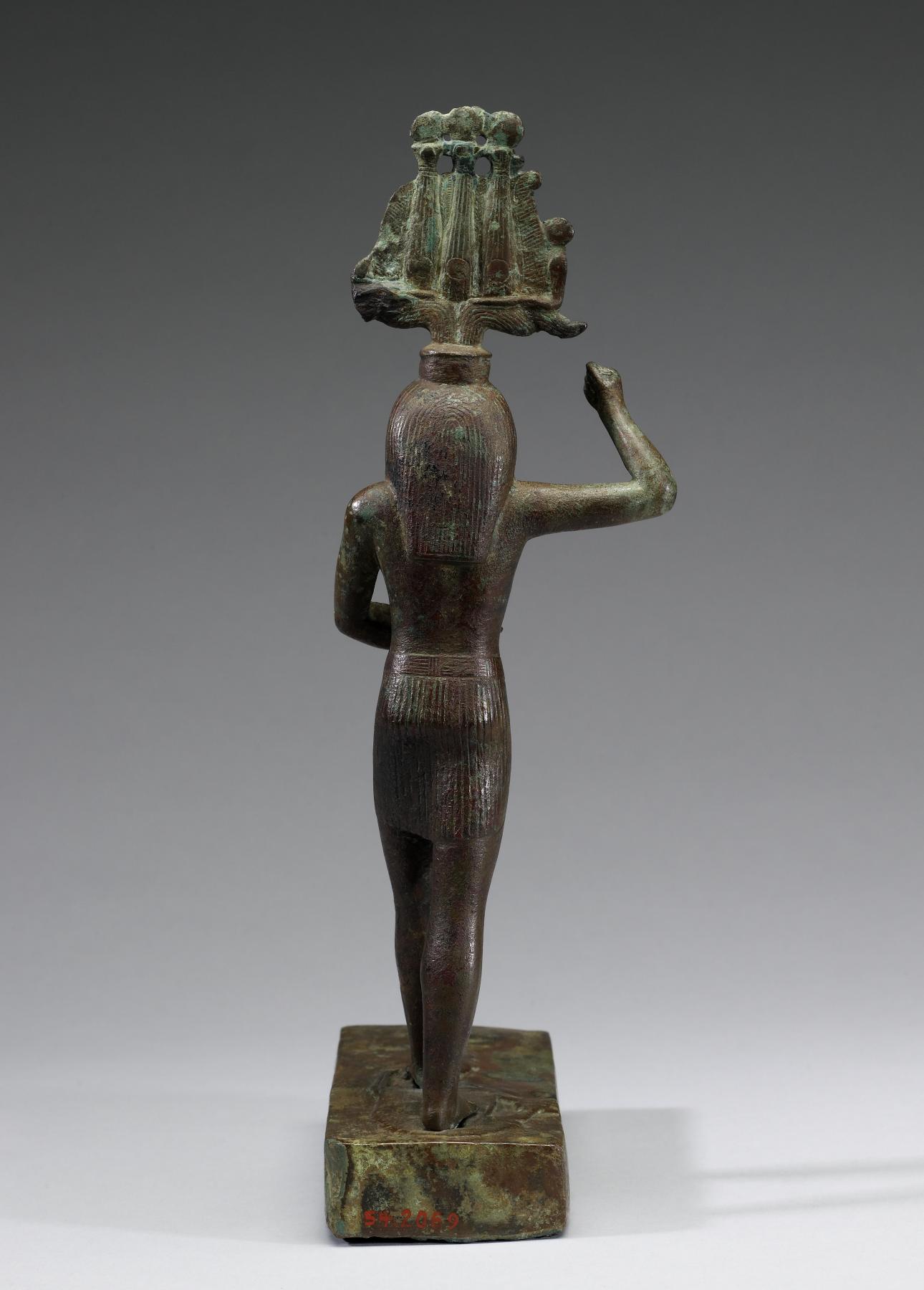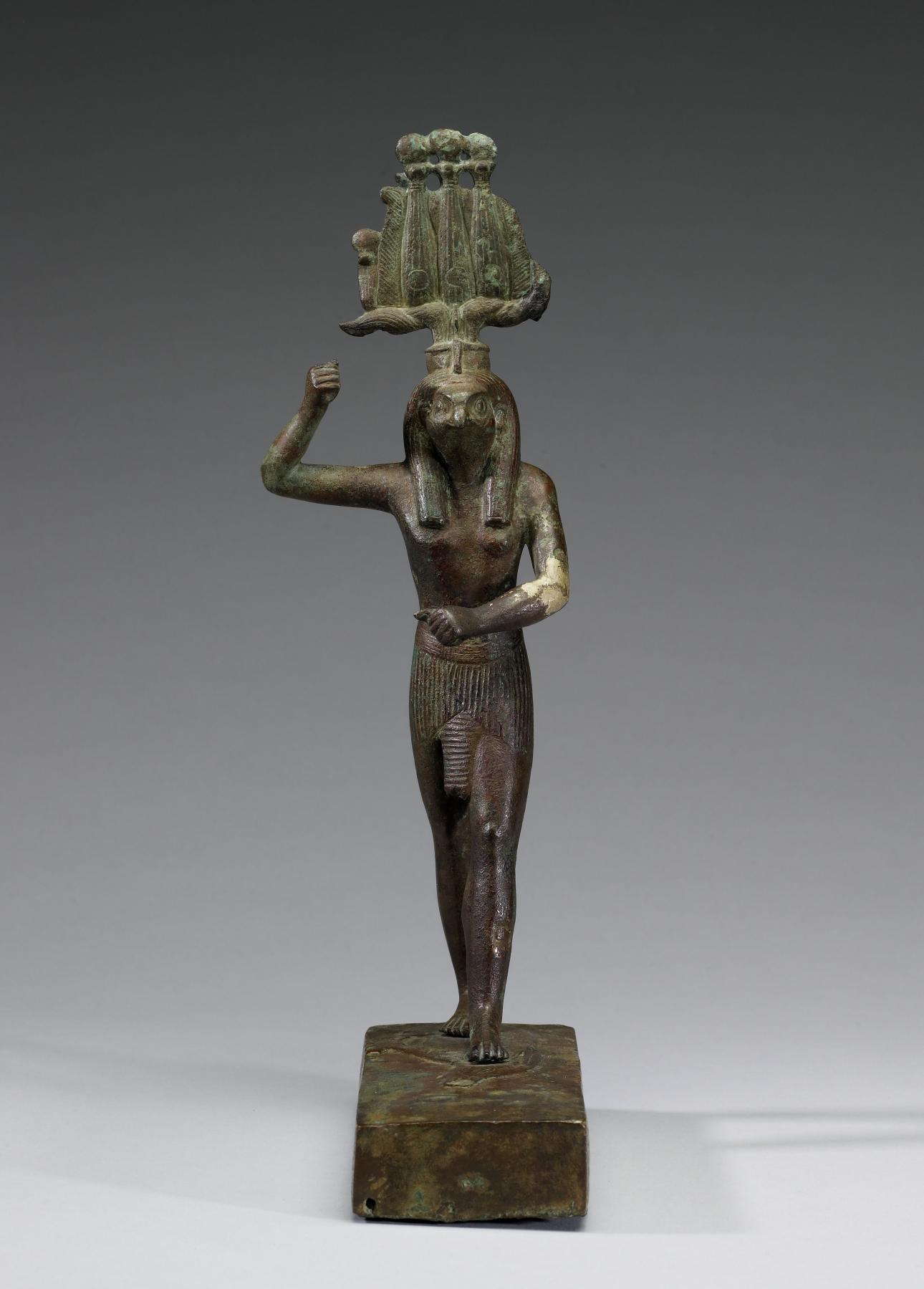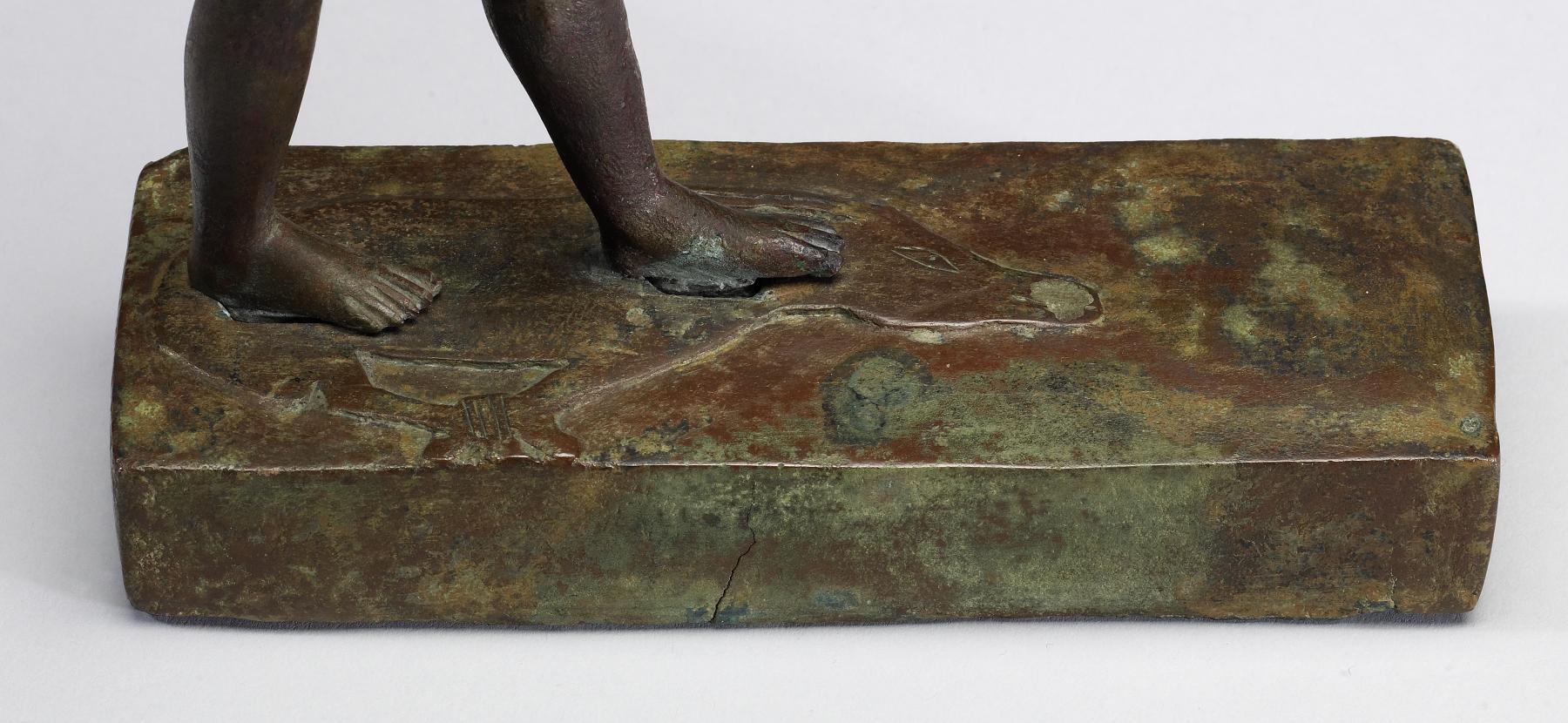Horus Trampling Antelope-Form Seth
(Ancient Egypt and Nubia )
This bronze statuette shows the falcon-headed god Horus trampling an antelope. The antelope, a desert animal sometimes associated with Horus's uncle Seth, is depicted in relief on the top of the base beneath Horus's two feet. According to ancient Egyptian mythology, Horus and Seth fought over who would become king following the death of Osiris, who was Horus's father and Seth's brother. A spear, once held in Horus's outstretched hands but now missing, would have pierced the antelope's head. The deity wears a pleated shendyt-kilt with an elaborate belt and the hemhem-crown.
Provenance
Provenance (from the French provenir, 'to come from/forth') is the chronology of the ownership, custody, or location of a historical object. Learn more about provenance at the Walters.
Khawam Brothers, Cairo, [date and mode of acquisition unknown]; Henry Walters, Baltimore 1930, by purchase; Walters Art Museum, 1931, by bequest.
Exhibitions
| 2013-2014 | Egypt’s Mysterious Book of the Faiyum. The Walters Art Museum, Baltimore. |
Conservation
| Date | Description | Narrative |
|---|---|---|
| Examination | Examined, cleaned | |
| Treatment | Examined, cleaned | |
| Treatment | Stabilized. | |
| Examination | Examined and cleaned in preparation for exhibition. | |
| Treatment | Examined and cleaned in preparation for exhibition. | |
| Treatment | Stabilized in preparation for exhibition. | |
| 9/17/1959 | Treatment | cleaned |
| 6/24/1981 | Examination | examined for condition |
Geographies
Egypt (Place of Origin)
Measurements
H: 11 15/16 x W: 2 5/8 x D: 6 7/8 in. (30.3 x 6.7 x 17.5 cm)
Credit Line
Acquired by Henry Walters, 1930
Location in Museum
Not on view
Accession Number
In libraries, galleries, museums, and archives, an accession number is a unique identifier assigned to each object in the collection.
In libraries, galleries, museums, and archives, an accession number is a unique identifier assigned to each object in the collection.
54.2069

